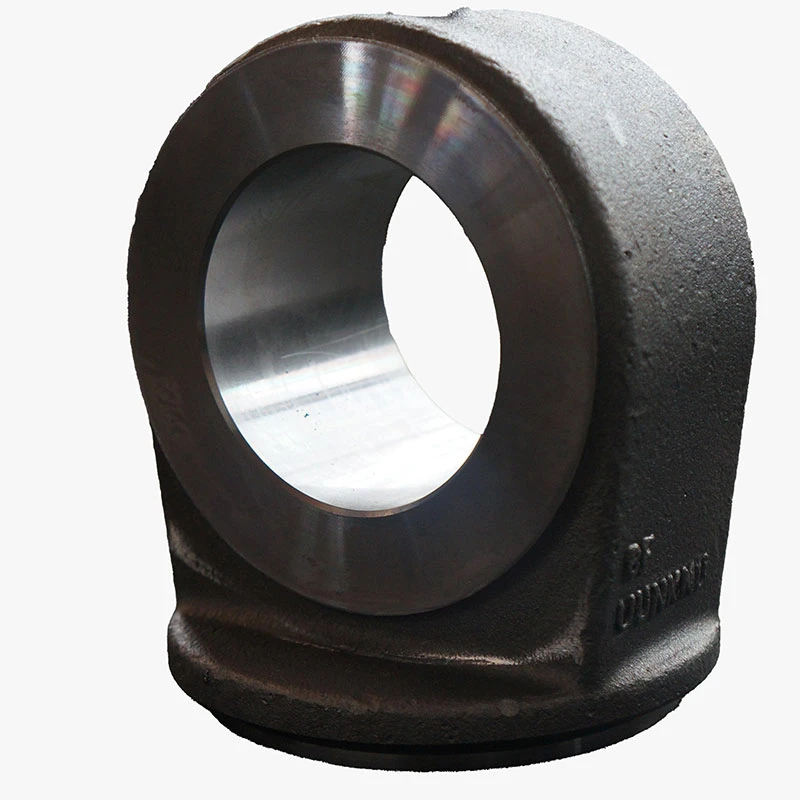aluminium gravity die casting
Understanding Aluminium Gravity Die Casting A Comprehensive Overview
Aluminium gravity die casting is a widely used manufacturing process employed in various industries to create high-quality metal components with precision. This method leverages gravity to fill a mold with molten aluminium, allowing for the production of complex shapes and intricate designs. As industries increasingly lean towards lightweight materials, aluminium gravity die casting has gained significant traction due to its notable advantages.
The Process of Aluminium Gravity Die Casting
The gravity die casting process begins with the creation of a mold, typically made from steel or iron, designed to withstand high temperatures and repeated use. The mold is composed of two halves, which are precisely machined to ensure an accurate fit and high surface quality. Once the mold is ready, it is pre-heated to a controlled temperature to enhance the flow of the molten aluminium and reduce defects like cold shuts.
After preparing the mold, aluminium alloy is heated to its melting point, generally around 660 degrees Celsius (1220 degrees Fahrenheit). The molten metal is then poured into the mold by gravitational force, filling the cavities created by the mold design. The simplicity of this gravity-driven approach minimizes the introduction of gas and other contaminants, which can compromise the integrity of the casting.
Once the mold is filled, the molten aluminium cools and solidifies within the cavities, taking on the precise shape of the mold. Cooling times vary based on the thickness of the casting and the thermal properties of the materials used in the mold. After sufficient cooling, the two halves of the mold are separated, and the finished piece is removed. Excess material, known as flash, may be trimmed away to achieve the desired finish.
Advantages of Aluminium Gravity Die Casting
One of the most significant advantages of aluminium gravity die casting is its ability to produce high-strength and lightweight components. Aluminium's low density offers substantial weight savings, making it an ideal choice for automotive, aerospace, and consumer electronics applications. Furthermore, aluminium castings exhibit excellent corrosion resistance and thermal conductivity, which enhances their suitability for various environments.
aluminium gravity die casting

Another advantage of this casting method is its ability to produce complex geometries with high dimensional accuracy. The precision of gravity die casting allows for intricate designs that would be challenging to achieve with other manufacturing methods. Additionally, the smooth surface finish of aluminium castings minimizes the need for extensive machining, reducing production costs and lead times.
The recyclability of aluminium also contributes to its popularity in gravity die casting. Aluminium can be recycled indefinitely without losing its beneficial properties, making this process more environmentally sustainable. As industries move towards greener practices, the demand for recyclable materials like aluminium continues to rise.
Applications of Aluminium Gravity Die Casting
Aluminium gravity die casting finds widespread application across numerous sectors. In the automotive industry, it is commonly used for creating engine blocks, cylinder heads, and transmission cases. These components benefit from the lightweight nature of aluminium, enhancing fuel efficiency and performance.
In the aerospace sector, aluminium castings are employed in various structural components and housings, contributing to the overall weight reduction of aircraft. The technology is also integral to the production of consumer electronics, where lightweight and heat-resistant materials are crucial for device longevity and performance.
Moreover, the field of industrial machinery increasingly relies on aluminium gravity die casting for producing robust and durable components, such as housings for motors and gear systems. The versatility of aluminium die casting allows manufacturers to cater to diverse market needs.
Conclusion
Aluminium gravity die casting is a vital manufacturing process that yields high-quality, lightweight components for various industries. Its ability to produce complex shapes with high dimensional accuracy, combined with the material's excellent properties, makes it a preferred choice among manufacturers. As technology continues to evolve, advancements in aluminium gravity die casting processes are likely to expand its applications and enhance its efficiency, ensuring its relevance in future manufacturing landscapes. Embracing this method not only meets contemporary demands but also aligns with the growing emphasis on sustainability and innovative engineering solutions.
-
Precision Sheet Metal Stamping Manufacturer | Fast & ReliableNewsAug.01,2025
-
OEM Sand Cast Pump Valve Fittings - Baoding Hairun Machinery And Equipment Trading Co., Ltd.NewsAug.01,2025
-
Custom OEM Impellers | High Efficiency & PrecisionNewsAug.01,2025
-
OEM Sand Cast Pump Valve Fittings - Baoding Hairun Machinery | Customization, Quality AssuranceNewsAug.01,2025
-
OEM Sand Cast Pump Valve Fittings - Baoding Hairun Machinery And Equipment Trading Co., Ltd.NewsAug.01,2025
-
OEM Sand Cast Pump Valve Fittings - Baoding Hairun Machinery And Equipment Trading Co., Ltd.NewsJul.31,2025















